From the Field-Agronomy Notes
go.ncsu.edu/readext?421018
en Español / em Português
El inglés es el idioma de control de esta página. En la medida en que haya algún conflicto entre la traducción al inglés y la traducción, el inglés prevalece.
Al hacer clic en el enlace de traducción se activa un servicio de traducción gratuito para convertir la página al español. Al igual que con cualquier traducción por Internet, la conversión no es sensible al contexto y puede que no traduzca el texto en su significado original. NC State Extension no garantiza la exactitud del texto traducido. Por favor, tenga en cuenta que algunas aplicaciones y/o servicios pueden no funcionar como se espera cuando se traducen.
Português
Inglês é o idioma de controle desta página. Na medida que haja algum conflito entre o texto original em Inglês e a tradução, o Inglês prevalece.
Ao clicar no link de tradução, um serviço gratuito de tradução será ativado para converter a página para o Português. Como em qualquer tradução pela internet, a conversão não é sensivel ao contexto e pode não ocorrer a tradução para o significado orginal. O serviço de Extensão da Carolina do Norte (NC State Extension) não garante a exatidão do texto traduzido. Por favor, observe que algumas funções ou serviços podem não funcionar como esperado após a tradução.
English
English is the controlling language of this page. To the extent there is any conflict between the English text and the translation, English controls.
Clicking on the translation link activates a free translation service to convert the page to Spanish. As with any Internet translation, the conversion is not context-sensitive and may not translate the text to its original meaning. NC State Extension does not guarantee the accuracy of the translated text. Please note that some applications and/or services may not function as expected when translated.
Collapse ▲Tobacco Research Update: Potassium Deficiency of Tobacco
In this tobacco research update, we highlight the symptoms of potassium deficiency. These images are part of a project supported by the North Carolina Tobacco Foundation to develop a web-based diagnostic key for the identification of nutrient disorders of tobacco.
Potassium (K) is one of the three core macronutrients, and consequently, deficiency symptoms manifest relatively quickly in tobacco. Potassium is a mobile element, which means it will translocate from mature tissues to the younger tissue where it is needed. This movement of K from older to younger foliage is what causes deficiency symptoms to develop first on the lower foliage.
Potassium deficiency symptoms begin as a mild chlorosis and mottling of the leaf margin. Since K is vital to leaf expansion, the edge of the foliage curls in and downward, resulting in an umbrella like shape (Fig. 1). In addition to marginal interveinal chlorosis, mottling, and leaf deformation, a K stressed plant exhibits a general stunting of growth (Fig. 2).
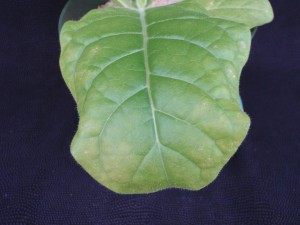
Figure 1. Initial K deficiency in the lower foliage, note the umbrella shape of the leaf margin.
©2016 Forensic Floriculture
As K starvation continues, interveinal chlorosis and mottling advance from the leaf margin moving toward the center. As symptoms progress, the marginal spots will expand in size and eventually become necrotic (Fig. 3).
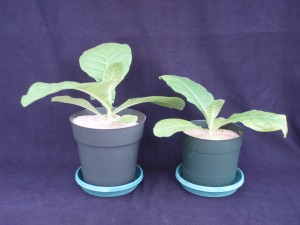
Figure 2. A healthy tobacco plant on the left as compared to a K deficient plant on the right.
©2016 Forensic Floriculture
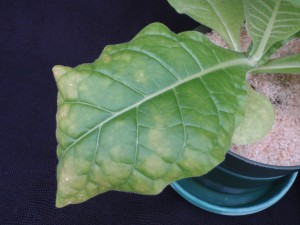
Figure 3. Intermediate K deficiency, note the marginal necrotic spots and advancing interveinal chlorosis.
©2016 Forensic Floriculture
When tobacco experiences a severe potassium deficiency, “firing” symptoms will appear. This unique and fascinating indicator appears as extremely chlorotic or even blanched foliage that is brittle in texture and appearance (Fig. 4). The fired leaves may experience loss of leaf tissue as the brittle, necrotic tissue breaks away. As potassium deficiency persists, the symptoms will continue up the plant into the next level of foliage.
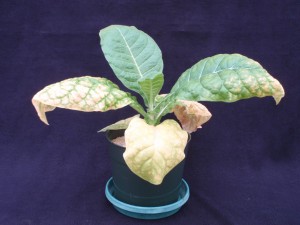
Figure 4. Firing of the lower leaves, note progression of symptomology (firing and blanching, sever chlorosis and necrosis of the margin, and beginning yellowing of the leaf margin) as it moves up the plant.
©2016 Forensic Floriculture
We would like to express our appreciation to the North Carolina Tobacco Foundation for supporting this project. We will be providing updates as symptoms progress over the course of the nutrient disorder induction phase of the experiment.
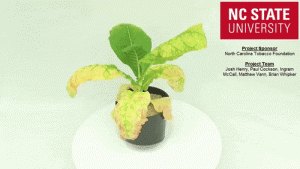
Figure 5. The 360-degree view of this symptomatic plant with a severe potassium deficiency may be viewed by clicking on the above picture.
©2016 Forensic Floriculture
Key Contact: Dr. Matthew Vann, Department of Crop and Soil Science mcvann@ncsu.edu
Contributing Authors: Paul Cockson, Josh Henry, Matthew Vann, and Brian Whipker
Funding Source: North Carolina Tobacco Foundation
Project Team: Josh Henry (NC State M.S. student in Horticultural Science), Paul Cockson (NC State B.S. student in Agroecology), Ingram McCall (Research Technician in Horticultural Science), Rhonda Conlon (Extension IT at NC State), Matthew Vann (Tobacco Extension Specialist, Dept. of Crop and Soil Science), and Brian Whipker (Professor of Floriculture and Plant Nutrition in Horticultural Science).


